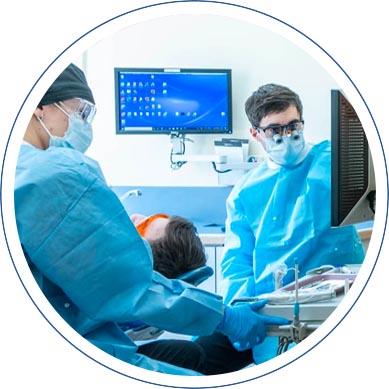Unveiling Periodontal Disease: Causes, Diagnosis, and Treatment
Do you have persistent bad breath, bleeding gums, or some loose teeth? If so, you might have periodontal disease, or, as it is commonly known, gum disease. According to the Centers for Disease Control and Prevention, nearly half of Americans aged 30 or older show signs of gum disease.
As your trusted local Olney dentist, we offer periodontal services to help stop the progression of the disease and re-establish your dental health.
Understanding Periodontal Disease
Periodontal disease is the inflammation and infection of your gum tissues surrounding and supporting your teeth. The condition is often progressive and commonly starts as gingivitis. If left untreated, it can develop into periodontitis.
And you don’t want periodontitis because it can lead to the breakdown of your teeth bone and tissues, which may eventually cause you to lose a tooth or multiple teeth.
Gum Disease: Common Causes
There are many health and lifestyle factors that can increase your risk of developing gum disease:
- Poor Oral Hygiene: Hey, we get it…sometimes you get lazy and don’t brush or floss regularly but this allows plaque, or bacteria, to build up on your teeth and harden into tartar, which can lead to your gums getting infected.
- Tobacco Use: Smoking or chewing tobacco will hinder the ability of your gum tissue to naturally repair itself resulting in gum decline.
- Age: As reported by the CDC, periodontal disease risk increases as you get older, with over 70% of Americans 65 and older having the condition.
- Genetics: And sometimes, you may simply be genetically predisposed to gum disease.
Diagnosing Periodontal Disease
The diagnosis of periodontal disease involves a comprehensive dental exam. We will review your medical history to identify any factors that could be contributing to your symptoms, such as tobacco use or certain medications. Our team will inspect your gums for any signs of inflammation and use a tiny ruler called a ‘probe’ to check for and measure any pockets around the teeth. In some cases, we might also recommend taking dental X-rays to check for bone loss.
Periodontal Disease Treatment with David Eskow, DDS
At scheduled dental cleanings, which you should have every six months, a hygienist will check for periodontal pockets. If you have pockets, their depth will be measured to determine the extent of the disease. Sometimes removing tartar from below the gum line and smoothing teeth roots–a procedure called scaling and root planing–can turn the tide and eliminate an infection. Over time, gums heal and reattach to teeth. However, in some cases, gum disease requires more extensive treatment.
Why Choose Our Local Olney Dental Office?
Whether you need a regular checkup or need an emergency dentist to deal with a sudden dental issue, we are ready to give you the best dental care.
For more information about periodontics or gum disease, or to schedule a consultation, please contact us at our Olney dental office.


